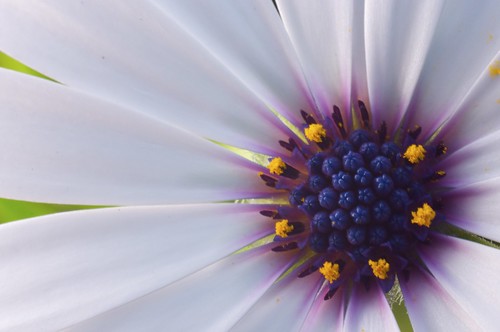I love doing macro photography on the cheap. Here in Sydney Spring has sprung and the sun is shining. For macro photography enthusiasts, that means one thing – flowers! It's very difficult to get sick of photographing this subject, so the first chance I got since Winter, I gathered up some of my el cheapo macro gear and hit the park for the daisies! Here's what I did.
The Gear – Getting Your Cheap On!
Macro Bellows – There's no real need to go out and buy an expensive macro lens when there are so many cheap options for macro photography. While a dedicated macro lens will make life easier, it's still very possible to get solid results with a macro bellows which are easy enough to find brand new on Ebay for under $50. The ones I have a very much like these ones.
Nikkor 50mm f/1.8 – This is one of Nikon's cheapest lenses (from memory I paid about $150 for it) and I have never regretted buying it. Yes, the f/1.4 is better, but it's also three times the cost. I have never regretted purchasing this lens. I also don't regret knocking it around and rolling it in the dirt. That's the beauty of a cheap lens. Workhorse.
Nikon D90 – This is still the most popular body among Light Stalking readers last time we checked, but I suspect the D7000 would be giving it a run for its money (in terms of how many people have one) these days. Both great cameras. Both capable of taking great photographs. But I occasionally do this with my old old D70 and it works just fine too.
SB 600 Flash – Not the most expensive flash or the cheapest. Great for what I wanted with these photographs.
Home Made Diffuser – I made one out of white cardboard and masking tape from an art store. I have a few bought ones that I could have just stuck on the flash, but I wanted to really increase the surface area of the light source so I built my own. Sometimes the plastic ones you stick on your flash just aren't “diffusy” enough and the shadows come out way too harsh. Here's a simple on you could copy (though mine made the surface area much bigger kind of like this one).
Flash Bracket – I wanted to get the flash off the camera, but I didn't have an assistant to hold it and I didn't want to be bothered with carrying a stand. So I used a flash bracket to put the flash off to the side and give my home made flash diffuser a bit more room. I bought one off ebay for about $10.
A Little Rant About Gear
The big question is could I have got better results from having better gear? Maybe. Probably. But the point is I don't think I really needed it. I am quite happy with the results and even though here at Light Stalking we can hit up companies for free gear pretty much anytime we want, I just don't think that's what enjoying photography is all about.
Get better gear if you want it. If you can afford it. If you don't or can't then don't give it another thought. Use your problem solving skills to get better photographs – not your wallet. If you want an example of what I am getting at, then check out Thomas Shahan's rig – probably one of the best macro photographers around lately and he uses one of the “worst” kits. It doesn't matter. His photographs are incredible.
For some other options, check out our article on cheap macro gear.
The Challenges of el Cheapo Macro
Diffraction – I usually shoot around the f/11 to f/16 range for these shots. Now, a lot of folks complain that anything over f/16 starts to result in problematic diffraction (the light bends while passing the aperture blades causing loss of sharpness) so be aware of that. I simply bring down my aperture a bit.
Depth of Field – The further away the lens plane is from the sensor plane in macro, the shallower the depth of field (which is obviously going to be a problem with bellows). That's not a particular problem for these types of photograph because I like using that narrow depth of field to draw attention to a particular part of the flower. If you'd prefer to have everything in focus, then you might want to explore focus stacking.
Viewfinder – When you have a closed aperture in your lens on the end of a macro bellows, it doesn't let through a lot of light to the viewfinder. You cannot see what you're looking at, even in the midday sun! A solution I use is to find the subject with the aperture wide open, then once I have it in the viewfinder, stop the aperture down to f/11 to f/16 and then shoot. Other people solve this in different ways from using a torch trough to LED lights. Use your imagination.
The Shooting
Settings required a little bit of messing around and were also affected by the extension of the bellows. Usually the settings were around f/16 at ISO 200 and shutter speed with a flash was obviously between 60 and 250 so it could sync. Flash was on about 1/2 power.
If you want to emulate it, that's a good starting point, but you will almost certainly have to mess around with those settings to get your shot right.
The Post Production
To be honest, I didn't do too much to these shots in post. A little lightening and maybe a nudge on the black slider in Lightroom and that's about all.
So get out there and shoot! You might get some great shots. But more importantly, get out and have a bit of fun. After all, isn't that why we all shoot?













